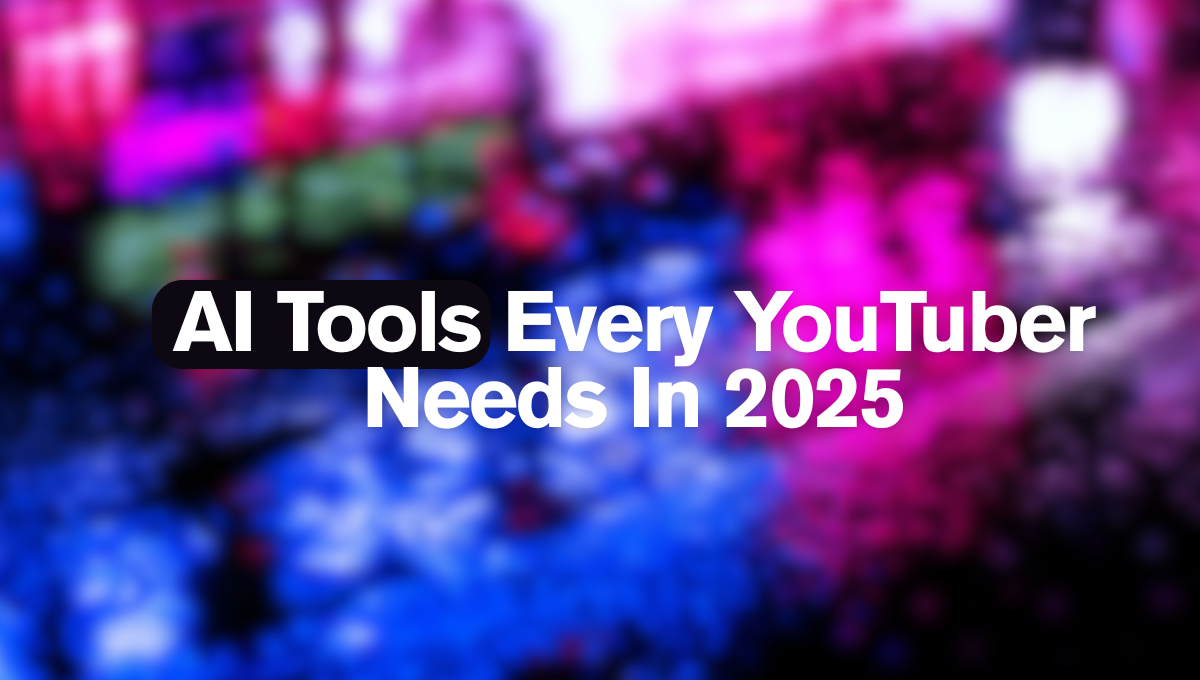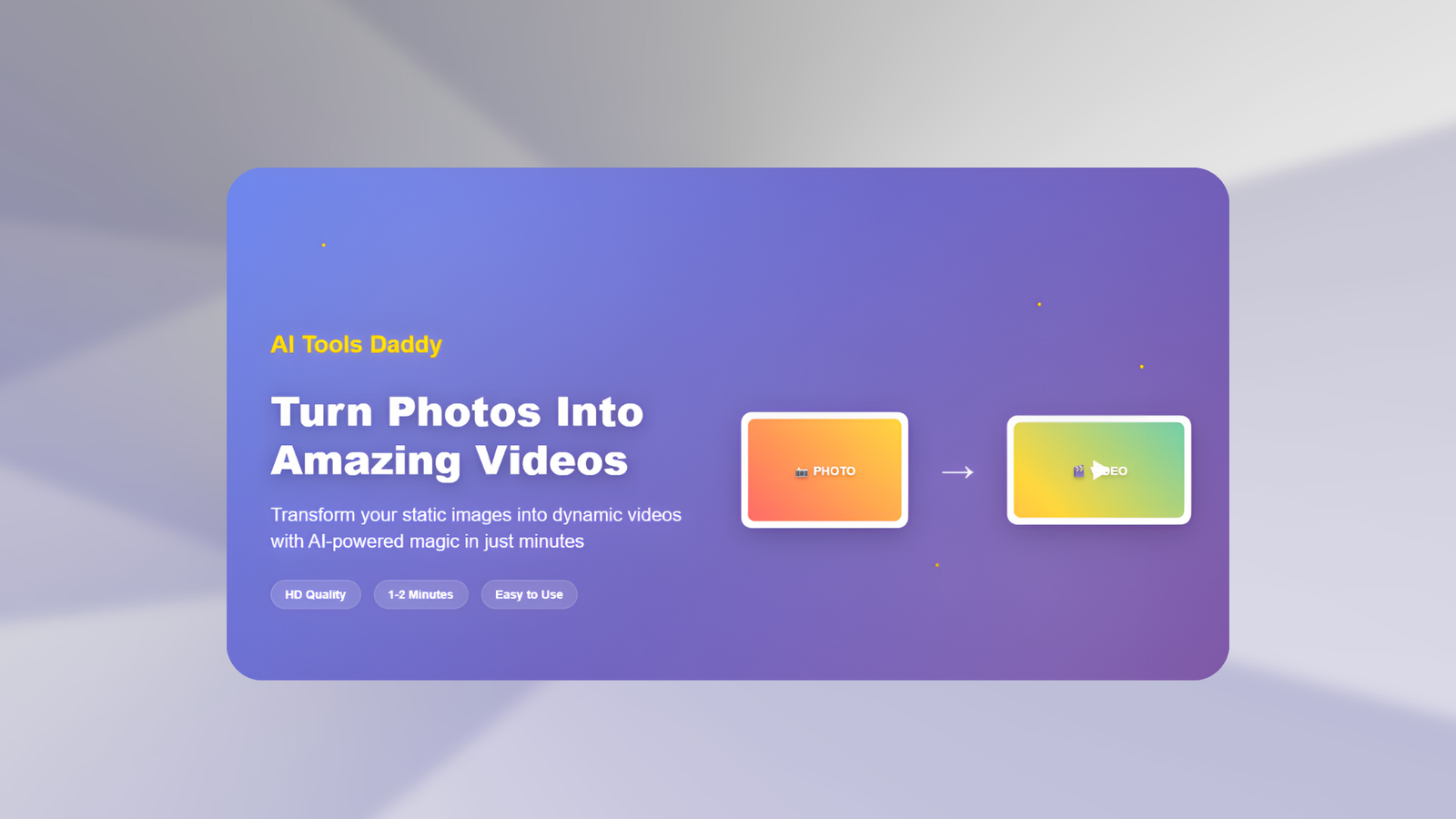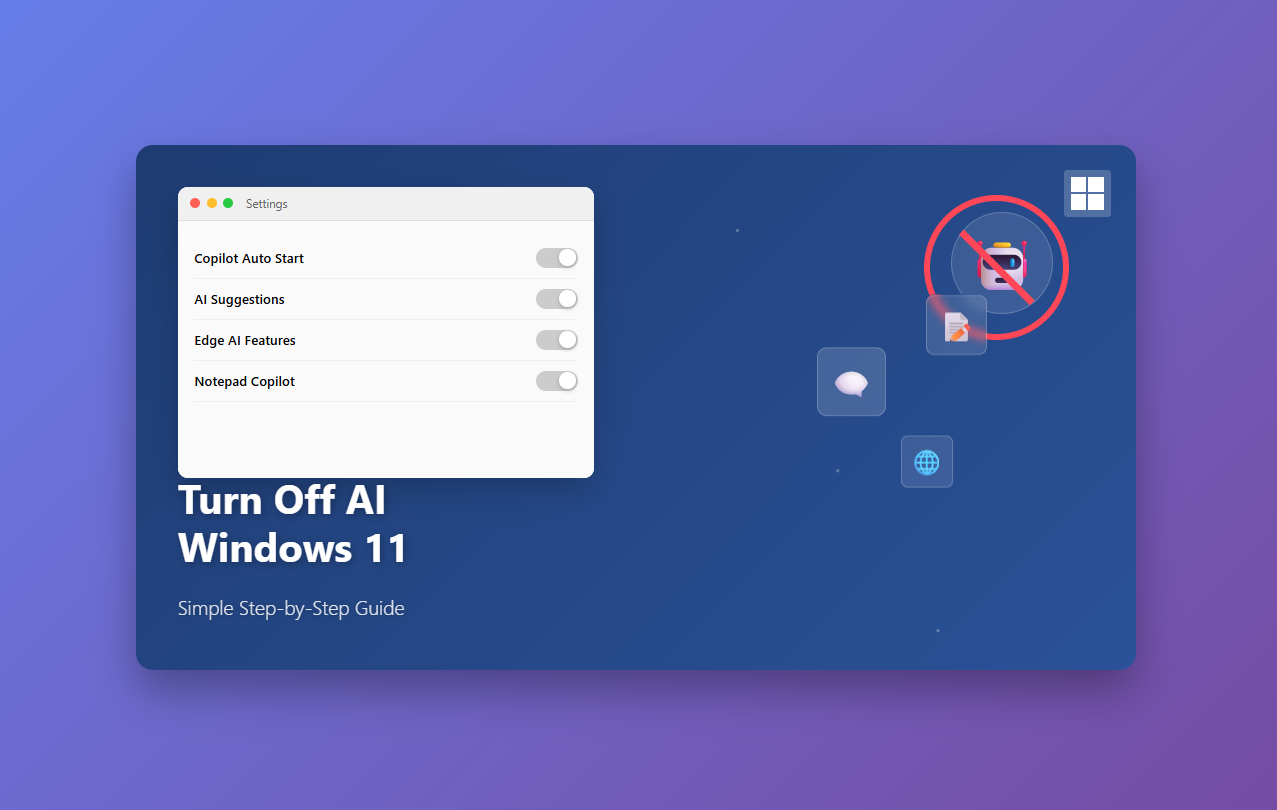AI Learning
Canva AI Hidden Features: Your Complete Guide
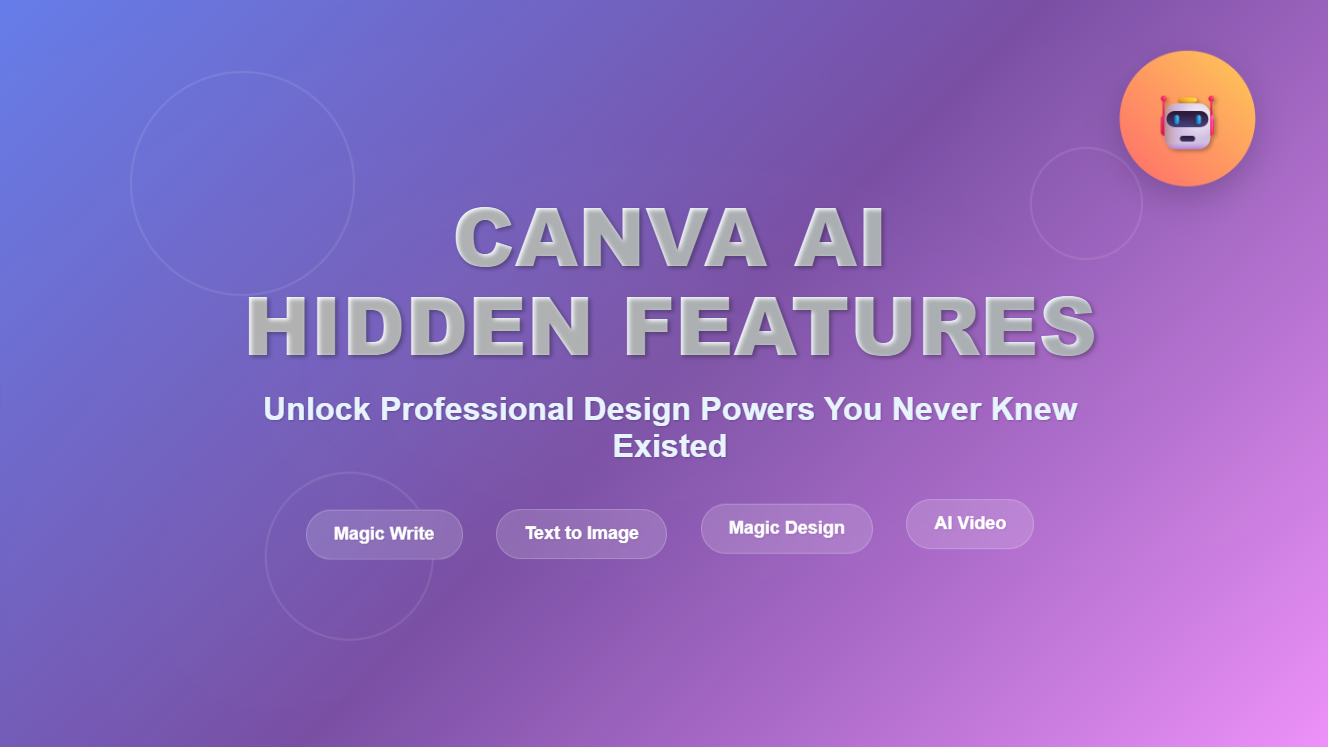
Want to unlock design superpowers you didn’t know existed? Canva AI’s hidden features can transform your creative workflow from amateur to professional in minutes. These advanced tools aren’t just about making pretty pictures – they’re about revolutionizing how you approach digital content creation, whether you’re running a business, teaching students, or building your personal brand.
What Makes Canva AI Different From Other Design Tools?
You’ve probably used Canva before, but have you explored its AI-powered Magic Studio? This isn’t your typical design platform anymore. Canva AI has evolved into a comprehensive creative assistant that can write your content, generate custom images, animate your designs, and even produce videos from simple text prompts.
The real game-changer? You don’t need design experience to create professional-quality content. While other platforms require hours of learning curves, Canva AI’s intuitive interface puts advanced capabilities at your fingertips immediately.
Core Canva AI Features That Will Transform Your Workflow
Magic Write: Your AI Writing Assistant
Think of Magic Write as having a professional copywriter on standby 24/7. This tool doesn’t just generate text – it learns your brand voice and maintains consistency across all your content.
Here’s how to maximize Magic Write:
For Social Media Posts: Input your topic, and Magic Write creates engaging captions that match your tone. You can upload writing samples to teach the AI your specific style, ensuring every post sounds authentically you.
For Presentations: Struggling with slide content? Magic Write generates compelling bullet points, explanations, and even speaker notes based on your presentation topic.
For Blog Content: Need inspiration? Magic Write can outline articles, suggest headlines, or expand on brief ideas you provide.
The best part? Free users get access to basic features, while Pro subscribers unlock advanced customization options that make this tool incredibly powerful for businesses.
Text to Image: Create Original Visuals Instantly
Stock photos feeling generic? Text to Image changes everything. This feature uses Stable Diffusion technology (the same engine powering many premium AI art tools) to create completely original, royalty-free images.
How to Use Text to Image Effectively:
- Be Specific: Instead of “dog,” try “golden retriever sitting in a sunny park wearing a red collar”
- Include Style Preferences: Add terms like “watercolor style,” “realistic photography,” or “minimalist illustration”
- Specify Colors: Mention color schemes that match your brand
- Consider Composition: Use terms like “close-up,” “wide shot,” or “bird’s eye view”
This tool eliminates copyright concerns and creates visuals that perfectly match your vision. You’re not settling for close-enough stock photos anymore – you’re getting exactly what you imagined.
Magic Design: From Blank Page to Finished Product
Magic Design tackles the most intimidating part of creation: starting. You simply describe what you need, and it generates complete designs ready for customization.
Instant Presentation Generation: Need a presentation in 10 minutes? Input your topic, and Magic Design creates a full deck with cohesive styling, relevant layouts, and professional structure. You’ll spend your time refining content instead of building from scratch.
Template Suggestions: Magic Design analyzes your request and suggests templates that align with your goals, whether you’re creating YouTube thumbnails, Instagram posts, or business presentations.
Text to Video: Professional Video Creation Made Simple
This feature democratizes video production in ways that would’ve seemed impossible just a few years ago. Thanks to Canva’s partnership with Runway (a leader in AI video technology), you can create studio-quality videos from simple text descriptions.
What You Can Create:
- Product demonstrations
- Educational content
- Social media videos
- Marketing materials
- Personal project videos
The quality rivals what large studios produce, but you’re creating it in minutes, not months.
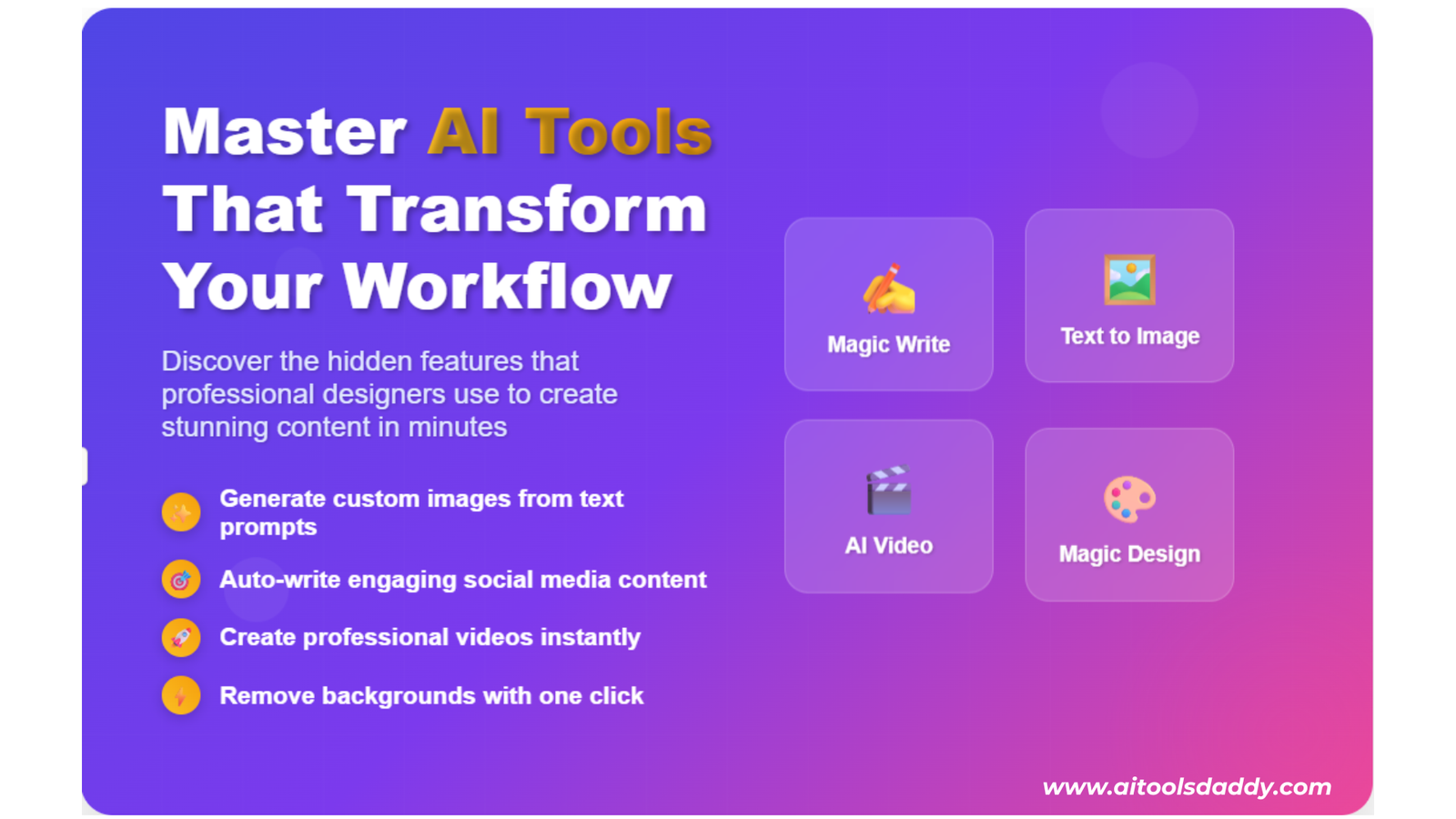
Master AI Tools
Advanced Editing Tools That Save Hours of Work
Magic Edit: Precision Photo Modification
Magic Edit functions like having Photoshop skills without learning Photoshop. You simply describe the changes you want, and the AI implements them with remarkable accuracy.
Real-World Applications:
- Transform a plain cake into a decorated birthday cake
- Change clothing colors in product photos
- Add or remove seasonal elements from images
- Modify backgrounds without green screens
The tool understands context, so your edits look natural and professionally integrated.
Magic Eraser: Clean Up Images Effortlessly
Magic Eraser removes unwanted objects from photos with surgical precision. Unlike basic editing tools that leave obvious gaps, this AI feature fills in backgrounds naturally.
When to Use Magic Eraser:
- Remove distracting elements from product photos
- Clean up backgrounds for professional headshots
- Eliminate unwanted people or objects from scenic photos
- Create cleaner compositions for marketing materials
The tool works best with simple backgrounds but handles complex scenes surprisingly well.
Magic Grab: Convert Static to Editable
Magic Grab transforms static elements into flexible, editable components. This feature shines when you’re working with existing designs that need modifications.
Key Capabilities:
- Convert text in images to editable text (limited by Canva’s font library)
- Separate design elements for individual editing
- Resize and reposition image components
- Transform layouts without starting over
Design Variations: Multiply Your Creative Output
Magic Switch: One Design, Multiple Formats
Creating content for different platforms used to mean redesigning everything from scratch. Magic Switch eliminates this tedium by automatically converting designs between formats while maintaining visual consistency.
Platform Optimization: Transform an Instagram post into a Pinterest pin, LinkedIn graphic, or Facebook cover photo with one click. The tool adjusts dimensions, repositions elements, and optimizes text for each platform’s best practices.
Time Savings: Instead of creating separate designs for each social media platform, you design once and let Magic Switch handle the variations.
Magic Expand: Scale Without Quality Loss
When you need larger versions of your designs, Magic Expand maintains image quality while increasing dimensions. This feature uses advanced algorithms to preserve detail and sharpness, ensuring your enlarged graphics look crisp across all applications.
Professional Applications That Drive Business Results
Social Media Marketing Revolution
Canva AI isn’t just changing how we create – it’s changing what’s possible for businesses of all sizes. Small businesses can now produce content that rivals major brands’ marketing materials.
Content Creation Speed: What used to take hours now takes minutes. You can maintain consistent posting schedules without burning out your creative team.
Visual Consistency: The Brand Kit feature ensures every piece of content aligns with your visual identity, even when different team members create designs.
Engagement Optimization: AI-generated images often perform better than stock photos because they’re unique and tailored to your specific message.
Video Content Innovation
Video marketing isn’t optional anymore – it’s essential. Canva AI’s video tools make it accessible for everyone:
Beat Sync Technology: Your videos automatically sync with music rhythms, creating professional-looking content without video editing expertise.
Template Library: Extensive video templates for different industries and purposes mean you’re never starting from zero.
Enhance Voice: Background noise reduction improves audio quality, making your videos sound professionally produced.
Educational and Collaborative Applications
Transforming Classroom Experiences
Teachers are discovering Canva AI’s potential for creating engaging educational materials:
Interactive Lessons: Magic Animate brings static educational content to life, helping students understand complex concepts through visual movement.
Custom Illustrations: Text to Image creates specific visuals for any lesson topic, from historical events to scientific processes.
Student Projects: Students can create professional-quality presentations and reports, developing digital literacy skills alongside subject knowledge.
Team Collaboration Excellence
Remote work demands better collaboration tools, and Canva AI delivers:
Real-Time Editing: Multiple team members can work on projects simultaneously, with changes appearing instantly.
Comment Systems: Built-in feedback mechanisms streamline the revision process.
Version Control: Never lose work or wonder which version is current.
Security and Automation: Working Smarter, Not Harder
Canva Shield: Protecting Your Creative Work
While specific details about Canva Shield aren’t widely publicized, the platform prioritizes user security through multiple protection layers. Your creative work, personal information, and AI-generated content receive enterprise-level security treatment.
Zapier Integration: Workflow Automation
The Canva-Zapier partnership creates powerful automation possibilities:
Automatic Design Generation: Spreadsheet entries can trigger design creation, perfect for data-driven marketing campaigns.
Form Integration: User submissions automatically populate design templates, streamlining customer communication.
Multi-Platform Publishing: Create once, publish everywhere with automated distribution to your various marketing channels.
Getting Started: Your Action Plan
Ready to unlock these hidden features? Here’s your step-by-step approach:
Week 1: Foundation Building
- Upgrade to Pro: While free features exist, Pro access unlocks the full potential
- Explore Magic Studio: Familiarize yourself with tool locations and basic functions
- Set Up Brand Kit: Upload your logos, colors, and fonts for consistent branding
Week 2: Content Creation
- Master Magic Write: Practice with different content types and voice styles
- Experiment with Text to Image: Create custom visuals for upcoming projects
- Try Magic Design: Generate templates for your most common design needs
Week 3: Advanced Features
- Learn Magic Edit: Practice photo modifications with your existing images
- Test Magic Switch: Convert designs between different platform formats
- Explore Video Tools: Create your first AI-generated video content
Week 4: Integration and Automation
- Set Up Collaborations: Invite team members and practice real-time editing
- Connect Zapier: Automate your most repetitive design tasks
- Develop Workflows: Create systems that leverage multiple AI tools together
Business Impact: Looking Toward 2025
The statistics are compelling: UK businesses increased digital content production by 67% since 2020. This trend isn’t slowing down – it’s accelerating. Companies using AI-powered design tools like Canva AI report significant advantages:
Cost Reduction: Less reliance on expensive design agencies and freelancers
Speed Increase: Campaigns launch faster with streamlined creative processes
Quality Improvement: Professional-looking content without professional-level budgets
Competitive Edge: Unique, custom visuals that stand out in crowded markets
Small Business Applications
For small businesses, Canva AI levels the playing field:
Marketing Materials: Create professional brochures, flyers, and advertisements that compete with larger companies’ materials.
Social Media Presence: Maintain consistent, engaging content across all platforms without hiring social media managers.
Internal Communications: Develop professional presentations, training materials, and company communications that reflect your brand quality.
Enterprise Solutions
Large organizations benefit from:
Brand Consistency: Ensure all team members create on-brand content regardless of design skill level.
Workflow Efficiency: Reduce approval cycles with higher-quality initial designs.
Cost Management: Decrease external design costs while increasing content output.
Common Mistakes to Avoid
Over-Relying on AI Generation
While AI tools are powerful, they work best when combined with human creativity and judgment. Use AI as a starting point, then customize and refine based on your specific needs and brand requirements.
Ignoring Brand Consistency
Having powerful tools doesn’t excuse inconsistent branding. Set up your Brand Kit properly and use it consistently across all AI-generated content.
Forgetting Your Audience
AI can create beautiful designs, but only you know your audience. Always review AI-generated content through your audience’s lens and make adjustments accordingly.
Skipping the Learning Curve
These tools are intuitive, but they’re also sophisticated. Invest time in learning their capabilities rather than expecting perfect results immediately.
Future Developments and Staying Current
Canva AI continues evolving rapidly. New features regularly emerge, and existing tools become more sophisticated. To stay current:
Follow Canva’s Updates: Subscribe to their newsletter and follow their social media for feature announcements.
Join User Communities: Connect with other Canva AI users to share tips and discover new applications.
Experiment Regularly: Set aside time monthly to explore new features and capabilities.
Provide Feedback: Canva actively incorporates user feedback into development. Share your experiences and suggestions.
Measuring Your Success
Track these metrics to quantify Canva AI’s impact on your work:
Time Savings: Document how much faster you complete design projects.
Cost Reduction: Calculate savings from reduced outsourcing and stock photo purchases.
Engagement Metrics: Compare performance of AI-generated content versus previous content.
Output Volume: Track how much more content you can create with the same resources.
Your Next Steps
Canva AI’s hidden features represent more than just new tools – they’re a fundamental shift in how creative work gets done. Whether you’re a business owner, educator, marketer, or creative professional, these capabilities can transform your output quality and efficiency.
Don’t wait for your competitors to discover these advantages first. Start exploring Canva AI’s hidden features today, and begin creating content that stands out in our increasingly crowded digital landscape.
The creative playing field has changed. Those who adapt and leverage these AI-powered tools will thrive, while those who stick to traditional methods will struggle to keep pace. Your journey to mastering Canva AI starts now – are you ready to unlock your creative potential?
Ready to transform your design workflow? Sign up for Canva Pro today and start exploring these game-changing AI features. Your future self will thank you for making the leap into AI-powered creativity.
AI Learning
Best Video Clipping Tools That Actually Work

Best Video Clipping Tools That Actually Work
Making videos for social media used to be hard. You needed expensive software and lots of time to learn how to use it. Not anymore. Now there are smart tools that do most of the work for you.
These tools can take your long videos and cut them into short, interesting clips perfect for Instagram, TikTok, or YouTube. The best part? You don’t need to be a video expert to use them.
Why Video Clips Matter Now
Social media has changed how we watch videos. People don’t want to sit through 20-minute videos anymore. They want quick, interesting clips that get to the point fast. Instagram Reels, TikTok videos, and YouTube Shorts are getting millions of views because they’re short and engaging.
If you’re a business owner, content creator, or just someone who wants more followers, making good video clips is essential. But here’s the problem – editing videos takes forever if you do it the old way. You might spend hours cutting one long video into several short ones.
That’s where these new tools come in. They use smart technology to watch your video and figure out which parts are most interesting. Then they automatically cut those parts into separate clips. It’s like having a professional editor working for you, but much faster and cheaper.
What These Tools Are Good For
Most people use these tools to:
- Turn long videos into short clips for social media
- Pull out the best parts of their videos automatically
- Make videos that look professional without learning complicated software
- Create content for Instagram Reels, TikTok, and YouTube Shorts
- Save time editing videos
- Make their content more engaging and shareable
- Repurpose old content into new formats
- Create highlight reels from live streams or webinars
- Make promotional clips for businesses
- Turn podcast episodes into short video snippets
The tools work with common video files like MP4, MOV, and AVI. Some can even grab videos directly from streaming sites like Twitch. This means you can take content from anywhere and turn it into social media gold.
Understanding Different Video Formats
Before we dive into the tools, it’s helpful to understand what makes a good social media video. Different platforms want different things:
Instagram Reels and TikTok prefer vertical videos (taller than they are wide). Think of how you hold your phone normally – that’s vertical.
YouTube Shorts can be vertical or square, but vertical usually performs better.
Facebook and LinkedIn often work better with horizontal videos (wider than they are tall), like regular TV.
Twitter is flexible but shorter videos (under 2 minutes) get more engagement.
The good news is that most of these tools can automatically adjust your video to fit any platform. You make one video, and they create versions for each social media site.
The Best Tools You Can Use
Adobe Express – The All-Around Champion
Adobe Express is like having a professional video editor that’s actually easy to use. You just upload your video, and it finds the interesting parts automatically. You can then change the length, add text, or adjust it for different social media platforms.
What makes Adobe Express special is that it works everywhere. Got an iPhone? It works. Android phone? Works there too. Want to edit on your computer? No problem. This flexibility means you can start editing a video on your phone during lunch and finish it on your computer at home.
The tool is smart about finding good moments in your video. If you’re talking to the camera, it knows when you’re making important points. If you’re showing something on screen, it picks up on visual changes. You don’t have to sit through your entire video marking the good parts – it does that for you.
Adobe Express also handles branding well. If you’re a business, you can add your logo, use your brand colors, and keep everything looking consistent. For personal creators, there are plenty of fun fonts and effects to make your videos stand out.
Best for: People who want professional results without professional complexity. Great if you make videos for both personal and business use.
Veed.io – The Beginner’s Best Friend
Veed.io wins the award for being the easiest to use. When you first visit their website, you won’t feel overwhelmed by buttons and options. Everything is laid out clearly, and they guide you through each step.
What’s really nice about Veed.io is that it doesn’t assume you know video editing terms. Instead of saying “adjust the aspect ratio,” it might say “make this fit Instagram.” Instead of complicated timeline editing, you get simple slider controls.
The platform shines when you’re making content for specific social media platforms. It has preset templates for Instagram Stories, TikTok videos, YouTube Shorts, and more. You don’t have to guess about sizes or lengths – just pick your platform and go.
Veed.io also has good automatic features. It can remove background noise from your audio, which is super helpful if you recorded your video in a noisy place. It can also generate subtitles automatically, which helps your videos reach more people.
Best for: Complete beginners who want to make good-looking videos without learning complicated software. Perfect for small business owners who need to make social media content quickly.
Lumen5 – Turn Writing Into Videos
Lumen5 does something different from the other tools. Instead of starting with a video, you can start with text. Got a blog post that’s doing well? Paste it into Lumen5, and it creates a video version.
Here’s how it works: You give it your text, and it breaks it down into key points. Then it finds relevant images and video clips to match each point. You end up with a video that tells the same story as your writing, but in a visual way.
This is incredibly useful for content creators who are better at writing than making videos. Maybe you run a blog, or you’re good at writing social media posts. Lumen5 lets you turn that writing skill into video content without starting from scratch.
The tool has a huge library of stock photos and video clips, so you don’t need to worry about finding images. It also suggests music that fits the mood of your content. Everything is licensed for commercial use, so you won’t get in trouble for copyright issues.
Lumen5 is also great for repurposing content. That popular blog post from last year? Turn it into a video and get a whole new audience. Those email newsletters that people love? They can become video content too.
Best for: Bloggers, writers, and anyone who creates text content but wants to expand into video. Perfect for repurposing existing content.
Kapwing – Built for Teams
If you work with other people on video projects, Kapwing is your best bet. It’s designed from the ground up for collaboration. Multiple people can work on the same video at the same time, just like Google Docs but for video editing.
This is huge for businesses, marketing teams, or content creators who work with editors. Instead of sending files back and forth, everyone can jump into the same project. You can leave comments on specific parts of the video, suggest changes, and see updates in real-time.
Kapwing keeps everything in the cloud, which means you never have to worry about losing your work. It also means you can access your video projects from any device. Start a project at the office, review it on your phone during your commute, and finish it at home.
The editing tools are comprehensive but not overwhelming. You can trim clips, add text, insert images, adjust audio, and apply filters. There are templates for different types of content, from promotional videos to educational content.
One feature that teams love is the approval process. You can set up projects so that certain people need to approve changes before they go live. This prevents mistakes and keeps everyone on the same page.
Best for: Teams, businesses, marketing departments, or anyone who needs to collaborate on video projects. Great for maintaining quality control and brand consistency.
Pictory – The Smart Content Finder
Pictory excels at one thing: finding the most interesting parts of long videos. If you have a 30-minute webinar, a 2-hour podcast, or a long live stream, Pictory can watch the whole thing and pull out the moments that will make good social media clips.
The tool analyzes your video for several things: when people are most engaged (if it’s a presentation), when the audio gets more excited, when there are visual changes, and when key topics are mentioned. It then creates short clips based on these moments.
This is incredibly valuable for people who create long-form content but need short clips for promotion. Podcasters use it to create teaser clips for social media. Business owners use it to turn webinars into promotional content. Educators use it to create study highlights from long lectures.
Pictory also understands different types of content. It knows that product demos need to show the product clearly, that educational content should focus on key learning moments, and that entertainment content should capture funny or dramatic moments.
The tool lets you customize the clips it creates. You can adjust the length, add your branding, change the music, and modify the text overlays. Everything is designed to make your clips look professional and on-brand.
Best for: Content creators who make long videos but need short clips for social media. Perfect for podcasters, educators, webinar hosts, and live streamers.
Clipchamp – Direct to Social Media
Clipchamp’s biggest advantage is its direct connection to social media platforms. Instead of editing your video, downloading it, and then uploading it to Instagram or TikTok, you can post directly from Clipchamp.
This might not sound like a big deal, but it saves significant time when you’re managing multiple social media accounts. You can create different versions of your video for different platforms and schedule them to post at optimal times.
The tool also has good templates specifically designed for social media success. These aren’t just size templates – they’re designed based on what actually works on each platform. The Instagram templates use visual styles that perform well on Instagram. The TikTok templates follow trends that are popular on TikTok.
Clipchamp includes features that social media managers love, like the ability to add captions automatically, resize videos for different platforms, and create multiple versions of the same content quickly.
Best for: Social media managers, businesses with multiple social accounts, or anyone who posts regularly across different platforms.
Descript – Edit by Changing Text
Descript works differently from every other video editor. Instead of cutting and moving video clips around, you edit the text transcript of your video. When you change the text, the video changes automatically.
Here’s an example: Let’s say you recorded a video and you said “um” a lot. In traditional video editing, you’d have to find each “um” in the video timeline and cut it out. With Descript, you just delete the “um” from the text transcript, and it automatically removes it from the video.
This approach is revolutionary for people who do a lot of talking in their videos. Podcasters, educators, business owners, and content creators who record themselves speaking can edit much faster with Descript.
The tool also has impressive features like voice cloning (you can type new words and it will say them in your voice) and automatic removal of filler words. It can clean up your audio, remove background noise, and even fix some video issues.
Descript is particularly good for creating clips from longer content. You can quickly scan through the transcript, find interesting quotes or moments, and turn them into short clips with just a few clicks.
Best for: Podcasters, educators, business owners, or anyone who creates content by talking to the camera. Perfect for people who want to edit quickly without learning traditional video editing.
Wisecut – Speed and Simplicity
Wisecut is built for one thing: speed. If you need to create video clips quickly and don’t want to spend time learning features you won’t use, Wisecut is your tool.
The interface is intentionally simple. You upload your video, tell it what kind of clips you want, and it creates them. There aren’t dozens of settings to adjust or effects to choose from. This simplicity is actually a strength – it means you can’t get distracted or overwhelmed.
Wisecut is particularly good at recognizing speech patterns and energy levels in videos. If you’re giving a presentation, it knows when you’re making important points. If you’re having a conversation, it picks up on the most engaging exchanges.
The tool automatically handles technical details like audio levels, video quality, and format compatibility. Your clips will work on whatever platform you want to use them on, without you having to think about technical specifications.
Best for: Content creators who value speed over customization. Perfect for people who need to create lots of clips quickly or who don’t want to spend time learning complex tools.
How to Pick the Right One
Think about what you need:
Just starting out? Try Veed.io or Adobe Express – they’re the easiest to learn.
Working with a team? Go with Kapwing so everyone can help edit.
Have long videos to cut down? Pictory or Wisecut will save you tons of time.
Want to turn articles into videos? Lumen5 is perfect for this.
Need to edit what people say? Descript lets you edit by changing the text.
Want to post directly to social media? Clipchamp connects right to your accounts.
Common Mistakes to Avoid
Even with these easy-to-use tools, people still make some common mistakes:
Making clips too long. Social media users have short attention spans. Keep your clips under 60 seconds for TikTok and Instagram Reels, under 60 seconds for YouTube Shorts. If you have something longer to say, break it into multiple clips.
Forgetting about audio. Bad audio will kill a good video. Make sure your original video has clear audio. Most of these tools can clean up audio problems, but they can’t work miracles.
Not adding captions. Many people watch videos with the sound off, especially on social media. Adding captions means more people can enjoy your content. Most of these tools can generate captions automatically.
Using the wrong format for the platform. A horizontal video will look terrible on TikTok. A vertical video won’t work well on YouTube. Make sure you’re creating content in the right format for where you plan to post it.
Not thinking about your brand. If you’re creating content for business, make sure your videos look consistent. Use the same fonts, colors, and style across all your clips.
Tips for Better Video Clips
Here are some strategies that work regardless of which tool you use:
Start strong. The first 3 seconds of your video are crucial. If you don’t grab attention immediately, people will scroll past. Start with your most interesting point, not an introduction.
Focus on one idea per clip. Don’t try to cover multiple topics in a short video. Pick one interesting point and make the whole clip about that.
Use good lighting. You don’t need professional lighting, but make sure people can see you clearly. Natural light from a window often works better than overhead room lighting.
Keep it simple. Don’t overload your clips with text, effects, or music. Simple, clear content performs better than cluttered videos.
Test different lengths. Some topics work better in 15-second clips, others need the full 60 seconds. Try different lengths and see what gets more engagement.
End with a call to action. Tell people what you want them to do next. Follow you, visit your website, try your product, whatever makes sense for your goals.
The Money Side of Things
Most of these tools offer free versions, but they usually have limitations. You might get watermarks on your videos, limited export quality, or restrictions on how many clips you can create per month.
Here’s what to expect:
Free versions typically let you create a few clips per month with basic features. Good for testing tools or very light use.
Paid versions usually cost between $10-30 per month and remove limitations. You get better video quality, no watermarks, more clips per month, and access to premium features.
Business plans can cost $50-200+ per month but include team features, brand management tools, and priority support.
For most people, the paid personal plans offer the best value. The free versions are fine for testing, but if you’re serious about creating content, the paid features are worth it.
What’s Coming Next
Video editing technology is improving fast. Here are some trends to watch:
Better automation. Tools are getting smarter about finding interesting moments in videos. Soon, they might understand your specific audience and create clips tailored to what your followers like.
Voice commands. Some tools are starting to let you edit videos by talking to them. Instead of clicking buttons, you might say “make this clip 30 seconds long” or “add captions.”
Real-time collaboration. More tools are adding features that let teams work together in real-time, like Google Docs but for video.
Better mobile editing. While most of these tools work on phones, they’re getting much better at mobile editing. This matters because many content creators do everything on their phones.
Making the Most of Your Content
Once you have your video clips, don’t just post them once and forget about them. Here are ways to get more value from your content:
Post at different times. Share the same clip at different times of day to reach different audiences.
Use different captions. The same video can work with different text depending on the platform and audience.
Create series. If you have a long video, create a series of short clips that tell a story together.
Repurpose old content. Those popular clips from last year might work again with a fresh audience.
Cross-promote. Use clips from one platform to drive traffic to your other social media accounts.
The Bottom Line
You don’t need to spend weeks learning complicated video software anymore. These tools do the hard work for you. Pick one that fits what you’re trying to do, and you’ll be making great video content in no time.
Most of these tools offer free versions to try, so test a few and see which one feels right for you.
The key is to start. Pick a tool, upload a video, and see what happens. You’ll learn more by doing than by reading about it. Video content is only getting more important for businesses and personal brands, so the sooner you start, the better.
Remember, the best tool is the one you’ll actually use. Don’t get caught up in finding the perfect option – find the good enough option and start creating. You can always switch tools later if you need different features.
Good luck with your video creation journey. The tools are ready when you are.
AI Learning
Quantum Computing and AI: A Simple Guide to the Future

Imagine a world where doctors can create personalized cancer treatments in days instead of years. Where your bank can detect fraud before it happens. Where scientists can predict earthquakes weeks in advance. This isn’t science fiction—it’s the reality we’re heading toward by 2030.
We’re standing at the edge of the biggest technological revolution since the internet. Two breakthrough technologies are about to merge and change everything: quantum computing and artificial intelligence. Think of quantum computing as giving computers superpowers, while AI is like giving them a brilliant brain. Together, they’re unstoppable.
Right now, even the most powerful computers work like a single person solving a puzzle piece by piece. But quantum computers can work like thousands of people solving different parts of the puzzle simultaneously. When you add AI’s ability to learn and make decisions, you get something that can tackle problems we thought were impossible.
This transformation will touch every part of our lives—from the medicines we take to how we predict weather, from keeping our money safe to discovering new materials. The companies and countries that understand this shift will lead the future. Those that don’t risk being left behind.
The quantum age is coming whether we’re ready or not. This guide will help you understand what’s happening and how to prepare.
What’s Coming by 2030
Two powerful technologies are about to change everything: quantum computing and artificial intelligence (AI). Think of them as the ultimate power couple of the tech world.
Right now, your smartphone processes information one step at a time. Quantum computers work differently. They can process millions of possibilities at once. When you combine this with AI, you get something extraordinary.
Understanding Quantum Computing
How Regular Computers Work
Your laptop uses bits. Each bit is either a 0 or a 1. It’s like having a coin that can only show heads or tails.
The computer processes these bits one by one. It’s fast, but it has limits.
How Quantum Computers Work
Quantum computers use something called qubits. Here’s the amazing part: a qubit can be 0, 1, or both at the same time.
Imagine a coin that’s spinning in the air. While it spins, it’s both heads and tails. That’s how qubits work.
This lets quantum computers explore many solutions at once. It’s like having a thousand people solve a puzzle instead of just one person.
Two Key Quantum Tricks
Superposition: This is the spinning coin effect. Qubits can be in multiple states at once.
Entanglement: When qubits become connected, they affect each other instantly. Change one, and the other changes too, even if they’re miles apart. Einstein called this “spooky action at a distance.”
When Quantum Meets AI
Today’s AI Limitations
Current AI is like a very smart student who can only read one book at a time. It learns patterns from data, but it takes time and lots of computer power.
Tomorrow’s Quantum AI
Quantum AI is like giving that student the ability to read thousands of books simultaneously. It can:
- Spot patterns much faster
- Handle more complex problems
- Make better predictions
- Learn from less data
Real Examples
Drug Discovery: Instead of testing thousands of chemicals one by one, quantum AI could test them all at once. A new medicine that takes 10 years to develop might only take 2 years.
Weather Prediction: Current weather forecasts struggle beyond 7 days. Quantum AI could predict weather patterns weeks or months ahead.
Traffic Optimization: Instead of managing one traffic light at a time, quantum AI could coordinate entire city traffic systems instantly.
Industries That Will Transform
Healthcare Revolution
Problem: Finding new medicines takes forever and costs billions.
Quantum Solution: Quantum computers can simulate how molecules behave. This is like having a virtual laboratory that can test millions of drug combinations instantly.
Real Impact:
- Diseases like cancer could have personalized treatments
- Epidemics could be predicted and stopped faster
- Surgery could be planned with perfect precision
Financial Services Makeover
Problem: Banks struggle to detect fraud quickly and manage investment risks.
Quantum Solution: Quantum AI can analyze millions of transactions simultaneously, spotting unusual patterns instantly.
Real Impact:
- Credit card fraud detected in milliseconds
- Investment portfolios optimized perfectly
- Market crashes predicted before they happen
Materials Science Breakthrough
Problem: Creating new materials (like better batteries or stronger steel) takes years of trial and error.
Quantum Solution: Quantum computers can simulate how atoms behave, designing materials virtually before building them.
Real Impact:
- Car batteries that charge in minutes
- Building materials stronger than steel but lighter than aluminum
- Solar panels that capture twice as much energy

Quantum Computing
Climate Modeling Enhancement
Problem: Climate models are too complex for current computers to handle perfectly.
Quantum Solution: Quantum AI can process massive amounts of environmental data and model complex climate interactions.
Real Impact:
- Hurricane paths predicted with 99% accuracy
- Climate change effects forecasted decades ahead
- Renewable energy systems optimized automatically
The Challenges We Face
Technical Hurdles
Qubit Stability: Qubits are fragile. They lose their quantum properties easily, like a spinning coin that suddenly stops spinning.
Limited Scale: Today’s quantum computers have about 1,000 qubits. We need millions for most real-world problems.
Integration: Making quantum computers work with regular computers is like connecting a Formula 1 car to a bicycle.
Security Concerns
The Problem: Quantum computers could break current internet security in minutes.
The Solution: Scientists are creating “quantum-proof” encryption. It’s like building locks that even quantum computers can’t pick.
Timeline: We need these new security systems ready before quantum computers become widespread.
Ethical Questions
Privacy: Quantum AI could analyze personal data in ways we never imagined.
Fairness: Will only rich companies and countries have access to quantum AI?
Control: How do we ensure quantum AI systems make fair decisions?
Preparing for the Quantum Future
For Businesses
Start Small: You don’t need to buy a quantum computer. Companies like IBM, Google, and Amazon rent quantum computing time.
Train Your Team: Start teaching employees about quantum concepts now.
Identify Opportunities: Look for problems in your business that involve complex optimization or pattern recognition.
For Individuals
Stay Informed: Follow quantum computing news and developments.
Learn the Basics: Take online courses about quantum computing and AI.
Consider Career Paths: Jobs in quantum computing will be in high demand.
The Hybrid Approach
Best of Both Worlds
Instead of replacing regular computers, quantum computers will work alongside them. Think of it like a team:
- Regular computers handle everyday tasks
- Quantum computers tackle the impossible problems
- AI coordinates between them
Quantum-Inspired Solutions
Even without quantum computers, we can use quantum ideas to make regular computers smarter. It’s like learning basketball techniques to become better at tennis.
What to Expect by 2030
Short Term (2025-2027)
- Quantum computers solve specific problems in labs
- Big companies start using quantum cloud services
- New quantum-resistant security systems launch
Medium Term (2027-2030)
- Quantum AI helps discover new medicines
- Financial systems become quantum-enhanced
- Climate predictions become much more accurate
Long Term (2030+)
- Quantum computers become as common as regular computers
- Quantum AI transforms every industry
- New discoveries we can’t imagine today
Getting Ready
For Organizations
- Assess Your Needs: What complex problems does your business face?
- Start Experimenting: Try quantum cloud services for small projects
- Build Partnerships: Work with quantum computing companies
- Invest in People: Train your team in quantum concepts
- Plan for Security: Prepare for quantum-resistant encryption
For Society
- Education: Schools need to teach quantum concepts
- Ethics: We need rules for quantum AI use
- Access: Ensure quantum benefits reach everyone
- Collaboration: Countries must work together on quantum research
The Bottom Line
Quantum computing and AI together will create the biggest technological leap in human history. It’s like going from walking to flying.
The changes will be massive, but they won’t happen overnight. We have time to prepare, but we need to start now.
The future belongs to those who understand and embrace these technologies. The question isn’t whether quantum AI will transform our world—it’s whether we’ll be ready when it does.
Key Takeaways
- Quantum computers process information in fundamentally different ways
- When combined with AI, they can solve previously impossible problems
- Every industry will be transformed by 2030
- We need to prepare now for security, ethical, and social challenges
- The benefits will be enormous, but only if we plan wisely
The quantum future is coming. Are you ready?
AI Learning
Understanding Machine Learning: Simple Explanations
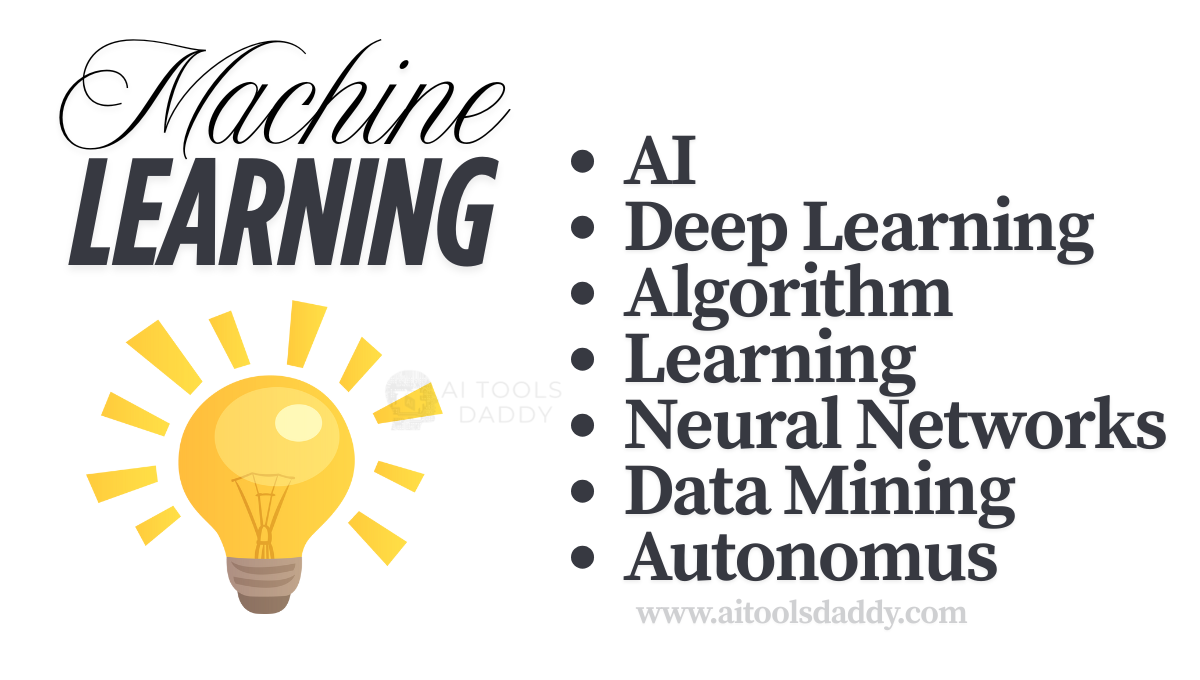
Machine learning sounds scary. But it’s not. It’s actually all around us. Every day, you use machine learning without knowing it.
What Is Machine Learning?
Machine learning is like teaching a computer to learn. Just like you learned to ride a bike by practicing, computers learn by looking at lots of examples.
Think of it this way. A baby learns to recognize cats by seeing many cats. After seeing hundreds of cats, the baby knows what a cat looks like. Machine learning works the same way.
A computer looks at thousands of pictures of cats. It learns what makes a cat look like a cat. Then it can spot cats in new pictures.
Why Does Machine Learning Matter?
Machine learning helps us solve big problems. It makes our lives easier. Here are some ways it helps:
Healthcare: Doctors use it to find diseases early. The computer can spot things human eyes might miss.
Transportation: Self-driving cars use machine learning. They learn to drive safely by practicing millions of miles.
Shopping: Online stores suggest products you might like. They learn from what you bought before.
Entertainment: Netflix knows what movies you’ll enjoy. It learns from your watching history.
How Does Machine Learning Work?
Let’s use a simple example. Imagine you want to teach a computer to recognize spam emails. First, you give the computer thousands of emails. You tell it which ones are spam and which ones are good. This is called training data.
The computer looks for patterns. It notices that spam emails often have certain words. Words like “free money” or “click here now” appear in spam emails more often.
After learning these patterns, the computer can check new emails. It looks for the same patterns it learned about. If an email has many spam-like patterns, it marks it as spam.
Types of Machine Learning
There are three main types of machine learning. Each type learns differently.
Supervised Learning
This is like learning with a teacher. You show the computer examples with the right answers. The computer learns to give the right answers for new examples.
Examples include:
- Recognizing handwritten numbers
- Predicting house prices
- Detecting spam emails
Unsupervised Learning
This is like learning without a teacher. You give the computer data but don’t tell it the right answers. The computer finds hidden patterns on its own.
Examples include:
- Grouping customers by shopping habits
- Finding unusual behavior in data
- Recommending products
Reinforcement Learning
This is like learning through trial and error. The computer tries different actions. It gets rewards for good actions and penalties for bad ones.
Examples include:
- Playing chess or video games
- Robot walking
- Trading stocks
Real-World Examples You Use Daily
Machine learning is everywhere in your daily life. Here are some examples you probably use:
Search Engines
When you search on Google, machine learning helps find the best results. Google learns what people usually want when they search for certain words.
Social Media
Facebook decides which posts to show you first. It learns what posts you usually like and comment on. Then it shows you similar posts.
Voice Assistants
Siri, Alexa, and Google Assistant understand your voice using machine learning. They learned by listening to millions of people speak.
Photo Apps
Your phone can recognize faces in photos. It learned by looking at millions of faces. Now it can group photos by the people in them.
Music Streaming
Spotify creates playlists just for you. It learns from the songs you play, skip, and save. Then it finds similar songs you might like.
Common Machine Learning Terms Made Simple
Here are important terms explained in simple words:
Algorithm: A set of rules the computer follows to learn. Like a recipe for learning.
Data: Information the computer learns from. Like examples in a textbook.
Model: The computer’s learned knowledge. Like the skills you have after practicing.
Training: The process of teaching the computer. Like studying for a test.
Prediction: The computer’s guess about new information. Like answering a question based on what you learned.
Accuracy: How often the computer gets the right answer. Like your test score.
Benefits of Machine Learning
Machine learning brings many benefits to our world:
Speed
Computers can look at millions of examples in seconds. Humans would take years to do the same work.
Accuracy
With enough data, computers can be more accurate than humans at certain tasks. They don’t get tired or distracted.
Cost Savings
Machine learning can do work that would require many people. This saves money for businesses.
New Discoveries
Machine learning can find patterns humans might miss. This leads to new discoveries in science and medicine.
Personalization
Machine learning creates personalized experiences. Your Netflix recommendations are different from your friend’s.
Challenges and Limitations
Machine learning isn’t perfect. It has some challenges:
Need for Data
Machine learning needs lots of good data to work well. Without enough data, it can’t learn properly.
Bias
If the training data is biased, the computer learns the bias too. This can lead to unfair results.
Black Box Problem
Sometimes we don’t understand how the computer made its decision. This can be problematic in important situations.
Privacy Concerns
Machine learning often uses personal data. This raises questions about privacy and data security.
Getting Started with Machine Learning
Want to learn more about machine learning? Here’s how to start:
Learn the Basics
Start with online courses that explain machine learning simply. Many free courses are available.
Practice with Tools
Use beginner-friendly tools like Scratch for Machine Learning. These tools let you experiment without coding.
Take Small Steps
Don’t try to understand everything at once. Start with simple concepts and build up slowly.
Join Communities
Find online groups where people discuss machine learning. Ask questions and learn from others.
The Future of Machine Learning
Machine learning will keep growing. Here’s what we might see:
Better Healthcare
Computers will help doctors diagnose diseases faster and more accurately. They might even predict health problems before they happen.
Smarter Cities
Traffic lights will adjust automatically based on traffic patterns. City services will become more efficient.
Education
Learning will become more personalized. Computer tutors will adapt to each student’s learning style.
Environmental Protection
Machine learning will help us understand climate change better. It will help us use energy more efficiently.
Tips for Understanding Machine Learning Better
Here are some tips to help you learn:
Think in Examples
When learning new concepts, think of real-world examples. This makes abstract ideas more concrete.
Ask Questions
Don’t be afraid to ask questions. Even experts started as beginners once.
Practice Regularly
Like any skill, understanding machine learning improves with practice. Spend a little time learning each day.
Stay Curious
Machine learning is always changing. Stay curious and keep learning about new developments.

Machine Learning Basic
Common Myths About Machine Learning
Let’s clear up some common misunderstandings:
Myth: Only Experts Can Understand It
Truth: Anyone can learn the basics of machine learning. You don’t need to be a computer scientist.
Myth: It Will Replace All Human Jobs
Truth: Machine learning will change jobs, not eliminate them all. New types of jobs will be created too.
Myth: It’s Too Complicated for Everyday Use
Truth: You already use machine learning every day without knowing it. It’s designed to be simple for users.
Myth: It’s Always Right
Truth: Machine learning makes mistakes just like humans do. It’s a tool that helps us make better decisions.
Conclusion
Machine learning is not as scary as it sounds. It’s a tool that helps computers learn from examples. Just like humans learn from experience.
You already use machine learning every day. It’s in your phone, your apps, and your online experiences. Understanding the basics helps you make better use of these tools.
Machine learning will continue to grow and improve our lives. By learning about it now, you’ll be better prepared for the future.
The key is to start simple and build your understanding slowly. Don’t worry about understanding everything at once. Take it one step at a time.
Remember, every expert was once a beginner. With curiosity and practice, you can understand machine learning too. The future is exciting, and machine learning will be a big part of it. Start your learning journey today. The world of machine learning is waiting for you to explore it.

 AI News6 months ago
AI News6 months agoTurn Photos into Videos Using Google Gemini AI

 AI News6 months ago
AI News6 months agoApple New AI Model Can Detect Pregnancy With 92 percent

 AI News5 months ago
AI News5 months agoGoogle Expands Firebase Studio with AI Tools for Popular Frameworks

 AI News6 months ago
AI News6 months agoGoogle hires Windsurf execs in $2.4 billion deal

 AI News5 months ago
AI News5 months agoOpenAI has now restored the services after outage

 AI Tutorial6 months ago
AI Tutorial6 months agoHow to Turn Off Microsoft AI Features

 AI Tools6 months ago
AI Tools6 months agoIs This Simple Note-Taking App the Future of AI?

 AI News6 months ago
AI News6 months agoGoogle launches Gemini CLI, an open source AI agent

